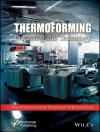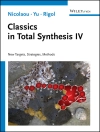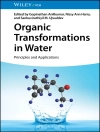Asymmetric synthesis remains a challenge to practicing scientists
as the need for enantiomerically pure or enriched compounds
continues to increase. Over the last decade, a large amount of
literature has been published in this field. Principles and
Applications of Asymmetric Synthesis consolidates and evaluates the
most useful methodologies into a one-volume resource for the
convenience of practicing scientists and students.
Authored by internationally renowned scientists in the field, this
reliable reference covers more than 450 reactions and includes
important stoichiometric as well as catalytic asymmetric reactions.
The first chapter reviews the basic principles, common
nomenclature, and analytical methods, and the remainder of the book
is organized according to reaction type. The text examines such
topics as:
* Carbon-carbon bond formations involving carbonyls, enamines,
imines, and enolates
* Asymmetric C-O bond formations including epoxidation,
dihydroxylation, and aminohydroxylation
* Asymmetric synthesis using the Diels-Alder reaction and other
cyclizations
* Applications to the total synthesis of natural products
* Use of enzymes in asymmetric synthesis
Practicing chemists in the pharmaceutical, fine chemical, and
agricultural professions as well as graduate students will find
that Principles and Applications of Asymmetric Synthesis affords
comprehensive and current coverage.
Daftar Isi
Preface.
Abbreviations.
Introduction.
-Alkylation and Catalytic Alkylation of Carbonyl Compounds.
Aldol and Related Reactions.
Asymmetric Oxidations.
Asymmetric Diels-Alder and Other Cyclization Reactions.
Asymmetric Catalytic Hydrogenation and Other Reduction
Reactions.
Applications of Asymmetric Reactions in the Synthesis of Natural
Products.
Enzymatic Reactions and Miscellaneous Asymmetic Syntheses.
Index.
Tentang Penulis
GUO-QIANG LIN, YUE-MING LI, and ALBERT S. C. CHAN are all professors in the Department of Chemical Technology at The Hong Kong Polytechnic University, Hong Kong, China.











